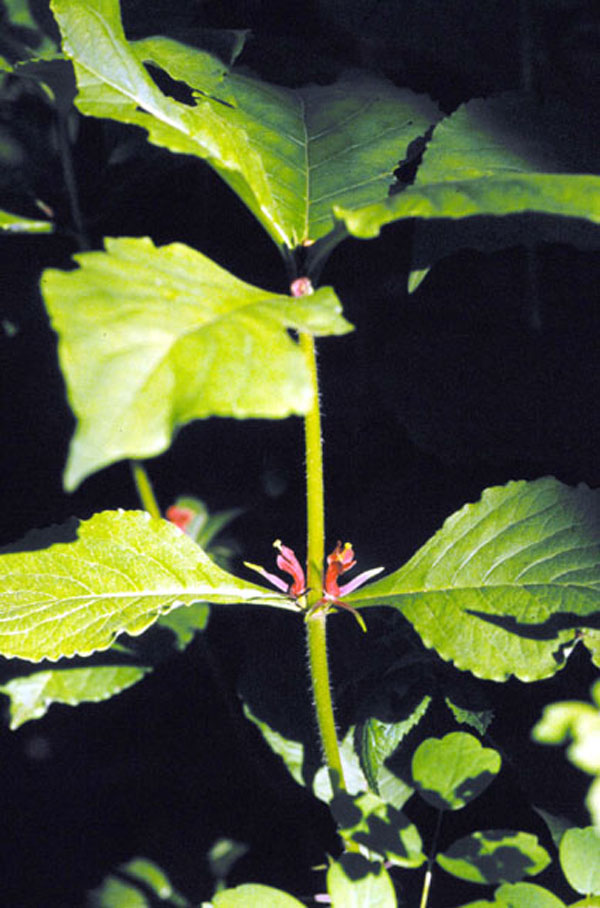
Common Name: Feverwort | Scientific Name: Triosteum Perfolatum

Family Name: Caprifoliaceae
Introduction
This was a minor player in the health game of the 19th century. Related to elder, its not surprising it was used to raise immunity to infection and to stimulate well being. However, not much is known about this plant and all that can be said is someone should look into it.
Resources
Notes from the Eclectic Physicians
Notes from the Eclectic Physicians
1883:Scudder: Cathartic
The bark of the root of triosteum perfoliatum ‑ U.S. Preparations: The powdered bark. Tincture of Triosteum. Dose: The dose of the powdered root, as a cathartic, grs. xx. to 3ss. Of the tincture, gtt. x. to xx. Therapeutic Action: The Triosteum is cathartic, emetic, atonic, diuretic, anti‑rheumatic, and alterative. When administered in suitable doses, it acts pretty efficiently as a cathartic; in larger doses, as an emetic; in smaller doses, it is tonic and diuretic. As a cathartic it is sometimes prescribed in the early stages of intermittent and remittent fevers, but it is not sufficiently active to command any particular attention in these diseases. It may be combined with the podophyllin or jalap in these cases, and answers a very good purpose. It may be used in atonic states of the system as a cathartic, as a laxative, or tonic, as it is not debilitating like most cathartics. The Triosteum is spoken of as a diuretic, but rarely used for this purpose.
Disclaimer: The author makes no guarantees as to the the curative effect of any herb or tonic on this website, and no visitor should attempt to use any of the information herein provided as treatment for any illness, weakness, or disease without first consulting a physician or health care provider. Pregnant women should always consult first with a health care professional before taking any treatment.
